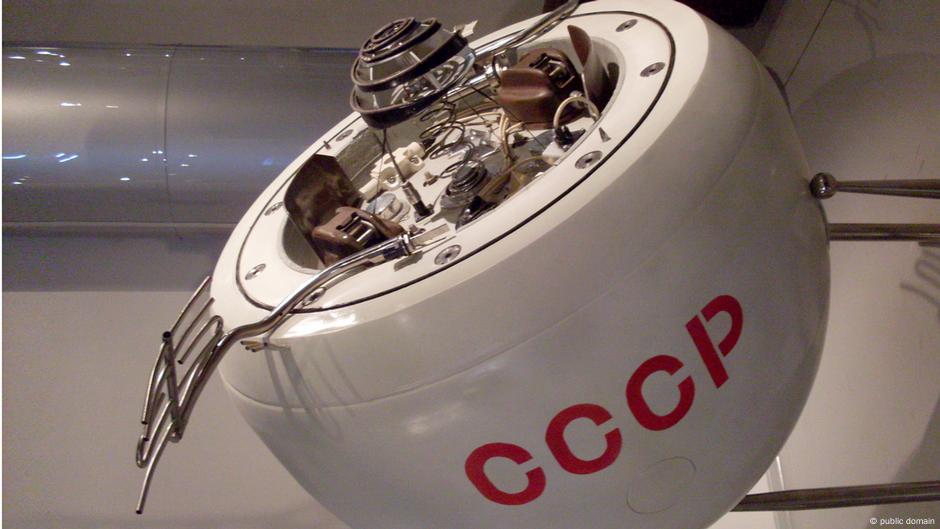A probe launched from the Soviet Union more than five decades ago has plummeted back to Earth, splashing down in the Indian Ocean. Kosmos 482 had been bound for Venus but never reached its destination.
Russian space agency Roscosmos on Saturday said a Soviet space probe that took off in March 1972 to explore the planet Venus crashed into the Indian Ocean.
Planetary lander Kosmos 482 never made it to Earth’s sister planet because it was dragged off course after a malfunction in its launch vehicle’s upper stage.
It’s got to be devastating to scientists to watch your baby get flung into obscurity.
In NASA’s lessons learned database, there’s one where the probe made out all the way to its destination, but the pictures came back all black. Because they forgot to take off the lens cap.
Too bad we don’t yet have Steve Austin to save our butts from this. Reference for the young’uns: https://bionic.fandom.com/wiki/Death_Probe
Experts previously warned that due to its sturdy construction — it was designed to survive Venus’s harsh atmosphere — the probe could reach Earth’s surface largely intact.
However, Roscosmos said, “Kosmos 482 no longer exists.”
Doubt
While Venus is about the same size as Earth, it is sometimes referred to as an “evil twin.”
The fuck? I have never heard it referred to as an ‘evil twin’. It’s fucking Venus. Goddess of beauty? Anyone?
Actually, yes, for good reason god dammit. Venus is terrifying. The acid-rain, steel-crushing atmosphere, volcanic climate, weird fuckin’ backwards-spin of it’s rotation? Shit ain’t natural, each day I wake up expecting scientists to find the mustache it’s been twirling
I’ve heard evil twin before
same
I’ve heard it called Earth’s twin, but never specifically an evil twin.
Alternate headline: 50 year old Russian space junk falls back to earth.
Hey friend. Calling the Venera probes “junk” is selling them short. The Soviet Venus program pulled off some genuinely insane feats between the ’60s and early ’80s—basically the punch-card era of spaceflight.
- Venera 7 was the first spacecraft to land on another planet and send data back (1970).
- Venera 9 delivered the first photo taken from the surface of another planet (1975).
- Venera 13 survived 450°C heat and 90 atmospheres of pressure in 1982, long enough to send back color photos, audio from the surface, and a full soil analysis. No other country—not even now—has matched that on Venus.

All of this was done with computers running at 100–200 kHz and 8 KB of memory. For comparison, modern smartphones have 3–6 GB of RAM, multi-core CPUs clocking in at 2.5+ GHz, and literally millions of times the processing power. Your phone wouldn’t last five seconds on Venus. Venera 13 lasted 127 minutes.
Despite the harshest planetary environment we’ve ever targeted—900°F surface temps, atmospheric pressure like 3,000 feet underwater, and clouds of sulfuric fucking acid—the Venera program still racked up a list of milestones:
- First data from another planet’s atmosphere (Venera 4, 1967)
- First successful planetary landing (Venera 7, 1970)
- First photo from the surface of another planet – Venera 9
- First color image and audio from another planet (Venera 13, 1982)
- First soil analysis from Venus (Venera 13 again)
Here’s how their success rate compares to other space programs:
Program Missions Successes Failures Success Rate Notes Soviet Venera 28 15 13 ~54% First landings, first photos, audio, and soil data from Venus NASA Venus (Mariner) 5 3 2 60% All flybys—no landings NASA (modern planetary) Many ~75–85% Varies ~75–85% Achieved after decades of experience and tech refinement SpaceX (Falcon era) 300+ ~98% Few ~98% Mostly low Earth orbit and ISS missions, not planetary landings SpaceX has incredible reliability, but they’re launching commsats and resupply capsules—not trying to drop hardware onto a planet that eats spacecraft for breakfast. NASA has never returned data from the surface of Venus, not ever, despite multiple attempts. Mars is a far easier target in every possible way, and it still took decades to achieve consistent success.
Lest you think Venera’s 54% success rate was a sign of failure — it wasn’t — it was a sign of pushing the boundaries of what was possible. They were first. They were bold. And they made history with kilobyte-level hardware and pressure vessels tougher than your car’s engine block.
This wasn’t junk. It was triumph.
Visual and audio proof:
This was an awesome post. Thank you
This guy space nerds.
A stage cut off too early and it failed to leave orbit. It has been derelict since 1972. It was junk.
Probe that could go easily in a Museum = Junk
These guys…
It must be very depressing to view the world with the amount of negativity that these cats do.
Sure, if you can get it down, let alone in one piece. It’s unreachable and uncontrollable. It’s a hazard to space navigation.
Well, it was, until it deorbited, anyway. Now it’s returned to the dust it was made from. (I doubt any parts made it down intact.)
That would be a headline about Russian army in Ukraine.





